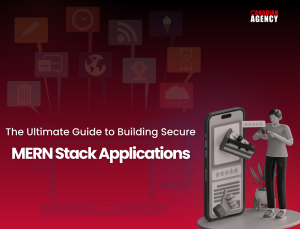When it comes to building a mobile app quickly and efficiently, few combinations work as seamlessly as React Native and Firebase. Whether you’re a startup founder testing a new idea or a developer validating an app concept, this duo empowers you to build quickly, launch early, and scale smoothly — all without managing complex infrastructure.
In this blog, we’ll explore why React Native and Firebase make the perfect pair for MVP (Minimum Viable Product) development, how they work together, and what benefits they bring to teams aiming to get their app into users’ hands faster.
Understanding the MVP Approach
Before diving into the technology, let’s clarify what an MVP means.
A Minimum Viable Product is the simplest version of your app that delivers core functionality to early users. The goal isn’t to build everything at once but to validate your idea with honest feedback.
When developing an MVP, speed and efficiency are key. You want to:
- Launch quickly with essential features
- Collect user feedback early
- Avoid over-investing before product-market fit
That’s precisely where React Native and Firebase shine.
Why React Native Is Ideal for MVPs
Developed by Meta (previously Facebook), React Native enables developers to use React and JavaScript to create cross-platform applications. Instead of creating separate iOS and Android versions, you can write most of your code once and run it everywhere.
Here’s why it’s so powerful for MVP development:
1. Cross-Platform Efficiency
You get a native-like experience on both iOS and Android from a single codebase. This drastically cuts development time and costs — perfect when you’re validating an idea.
2. Fast Development with Hot Reloading
React Native’s Fast Refresh feature lets you see updates instantly, without rebuilding your app. Developers can experiment and iterate quickly, which is crucial for early-stage projects.
3. Rich UI with Native Performance
Despite using JavaScript, React Native renders native components that behave like fundamental native components. The result is smooth performance and flexible design, allowing your MVP to look and feel professional from day one.
4. Large Ecosystem and Community Support
You’ll find thousands of open-source libraries and pre-built components for everything from animations to navigation. This means fewer lines of code to write and faster delivery.
Why Firebase Complements React Native Perfectly
Firebase, developed by Google, is a Backend-as-a-Service (BaaS) platform that eliminates the need to build and manage servers. It gives you everything you need to run your app’s backend — instantly and securely.
Here’s why Firebase is so valuable when paired with React Native:
1. No Server Setup
Firebase handles databases, authentication, storage, and hosting. You don’t need to worry about configuring servers or managing infrastructure — connect and build.
2. Realtime Database and Firestore
Firebase’s databases automatically sync data in real time across devices. That’s ideal for chat apps, dashboards, or collaboration tools where instant updates matter.
3. Authentication Made Easy
Firebase Authentication supports email, Google, Facebook, Apple, and other social logins out of the box. You can integrate user sign-in in under 5 minutes.
4. Scalability Without Effort
As your user base grows, Firebase scales with you. There’s no need for manual scaling or complicated DevOps setup.
5. Analytics and Crash Reporting
Firebase Analytics and Crashlytics provide you with insights into user behavior and app stability — critical data for refining your MVP based on user feedback.
How React Native and Firebase Work Together
React Native handles the frontend, creating a responsive, smooth, and interactive interface. Firebase handles the backend, managing data, authentication, and cloud functions.
Here’s a simplified look at how they integrate:
- User Interaction: The user interacts with the app’s React Native interface.
- Data Request: The React Native app sends or fetches data using Firebase’s software development kits (SDKs).
- Backend Processing: Firebase stores, retrieves, and synchronizes data in realtime.
- Instant Update: The React Native UI updates automatically when Firebase data changes.
This seamless data flow enables developers to focus on user experience instead of server configuration.
Key Benefits of Using React Native + Firebase for MVPs
Let’s look at the top reasons startups and developers choose this combination.
1. Speed to Market
React Native and Firebase help you go from idea to prototype in days, not months. You can quickly build, test, and release your MVP and stay ahead of the competition.
2. Lower Development Costs
You save a lot of money overall because you can use the same codebase for both platforms and don’t need to hire backend developers for setup.
3. Realtime Features
Firebase’s real-time syncing features enable you to create highly engaging features without additional complexity, whether they are dashboards, live chat, or notifications.
4. Simplified User Management
You can avoid creating login systems from scratch by using Firebase Authentication. You can secure the data in your app and manage users with ease.
5. Automatic Updates and Hosting
Updates can be rapidly deployed with Firebase Hosting. React Native’s over-the-air update capabilities allow you to make changes to features or resolve bugs while on the road.
6. Scalable Infrastructure
Your MVP may start small, but if it gains traction, Firebase scales effortlessly. You can grow from hundreds to millions of users without changing your backend setup.
7. Built-in Analytics for Smarter Decisions
Firebase’s analytics tools let you understand user behavior early. You can track which features users engage with most — essential for refining your product roadmap.
Real-World Use Cases
Let’s review the various MVP types in which this combination functions:
1. Chat or Messaging Apps
You may create a useful conversation feature that updates quickly across devices by utilising Firebase Realtime Database. Messages appear smoothly thanks to React Native’s elegant handling of the user interface.
2. On-Demand Services
Firebase Cloud Functions can automate workflows and send notifications for delivery or booking apps to improve customer experience. React Native guarantees users’ and suppliers’ smooth cross-platform access.
3. Social Media or Community Apps
Use Firebase Authentication for sign-ups and Cloud Firestore for storing user posts and comments. React Native’s flexible UI helps craft a clean, social feed quickly.
4. E-Commerce MVPs
React Native can manage the shopping interface, while Firebase manages product data, payments, and order tracking in real time — all without a custom backend.
Getting Started with a React Native + Firebase Project (A Simplified Overview)
Here’s a quick, high-level outline of the steps to get your MVP off the ground:
- Initialize Your React Native App: Start by creating a new React Native project using the standard command-line tools. This sets up the basic structure for your cross-platform application.
- Create a Firebase Project: Head to the Firebase console, create a new project, and register your app for both iOS and Android platforms. Firebase will provide you with a configuration file.
- Integrate the Firebase SDK: Use a package manager to install the core Firebase SDK and any specific modules you need, such as those for authentication and Cloud Firestore, directly into your React Native project.
- Connect and Configure: Use the supplied setup information to start your app’s Firebase connection. This connects your cloud backend to your frontend.
- Start Building Features: With the connection established, you can immediately begin coding your core features, like user login screens and data storage, leveraging Firebase’s straightforward methods to read and write data in real time.
Within hours, you’ll have a working MVP prototype ready for real-user testing.
Best Practices for Building a React Native + Firebase MVP
- Keep It Simple: Focus on one core problem your MVP solves. Don’t overload it with features.
- Use Modular Code: Separate business logic and UI components for maintainability and easier future expansion.
- Leverage Expo (If Suitable): For smaller MVPs without complex native modules, a framework like Expo can dramatically simplify the setup and testing process.
- Test Early and Often: Use Firebase Analytics to monitor usage and crashes immediately after launch, informing your next development cycle.
- Prepare for Growth: From the outset, utilize Firebase Security Rules and effective database indexing to ensure your app remains secure and performs optimally as it scales.
Conclusion
Building an MVP doesn’t have to be slow or expensive. With React Native and Firebase, you can move from idea to market-ready app in record time — without compromising performance or quality.
This powerful pair offers everything you need: a fast front end, a scalable backend, and an ecosystem that grows with your product.
So, whether you’re testing a startup idea or building an internal tool, React Native and Firebase are your go-to technologies for an innovative, cost-effective, and high-performance MVP.




